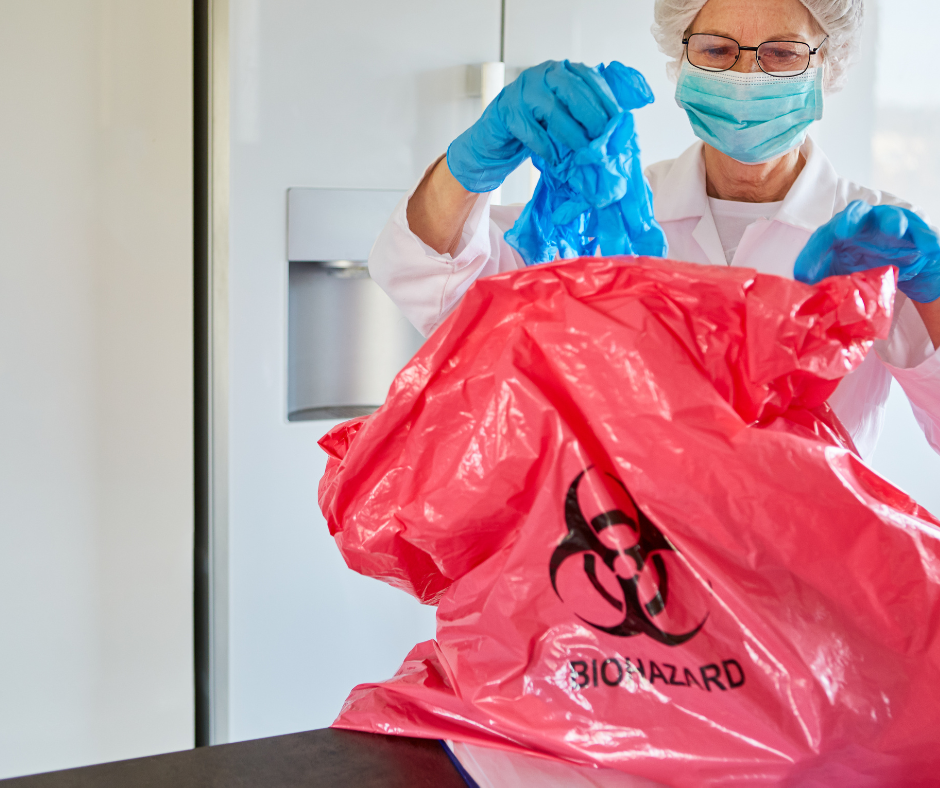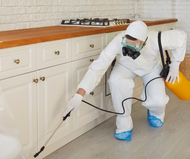October 1, 2025
The Importance of Proper Disinfection in Homes and Clinics
Disinfection is more than just wiping down surfaces—it’s one of the most effective ways to protect your health and prevent the spread of harmful pathogens. Whether at home or in a medical setting, proper disinfection creates a cleaner, safer environment for everyone. In this article, we’ll break down the key benefits of proper disinfection and provide best practices for both households and healthcare facilities.
Why Disinfection Matters
Disinfection is the process of killing or reducing harmful microorganisms such as bacteria, viruses, and fungi. Unlike regular cleaning, which removes dirt and debris, disinfection targets invisible threats that can cause illness.
In homes, this means reducing the risk of colds, flu, or foodborne illness. In clinics and healthcare settings, proper disinfection is even more critical—it protects vulnerable patients, prevents healthcare-associated infections, and ensures compliance with safety standards.

Key Benefits of Proper Disinfection
1. Reduces Risk of Illness
High-touch surfaces such as doorknobs, countertops, keyboards, phones, and medical equipment can quickly accumulate germs, bacteria, and viruses. Without regular cleaning and disinfecting, these surfaces can become hot spots for the spread of infections like colds, flu, or even COVID-19.
By using EPA-approved disinfectants on a routine basis, you significantly reduce the risk of illness in your home or clinic. This helps protect your loved ones, patients, or staff from preventable infections and contributes to a healthier daily environment.
2. Creates a Safe Healing Environment
In healthcare facilities, cleanliness directly impacts patient trust. A properly disinfected clinic sends a clear message: your safety comes first. Patients feel reassured knowing they’re in a hygienic space where every precaution has been taken to minimize risk.
For families at home, disinfection also provides peace of mind, knowing that surfaces are free from harmful germs. A clean environment supports both physical and mental well-being.
3. Protects Vulnerable Groups
Certain groups—like children, the elderly, and people with weakened immune systems—are at a higher risk of contracting infections. Proper disinfection at home shields children from common viruses picked up at school, while in clinics, it helps protect patients undergoing treatments that weaken the immune system.
By maintaining a strong disinfection routine, you’re creating a protective barrier for those who need it most.
4. Prevents Cross-Contamination
Cross-contamination is a major concern in healthcare settings. For example, if medical equipment or exam tables aren’t disinfected properly between patients, germs can spread from one individual to another. This not only puts patients at risk but also endangers healthcare workers.
Following strict disinfection protocols—including the use of medical-grade disinfectants and single-use cleaning supplies—greatly reduces the risk of cross-contamination. At home, disinfecting shared spaces like kitchens and bathrooms prevents family members from passing germs back and forth.
5. Promotes Long-Term Wellness
Proper disinfection doesn’t just stop short-term illnesses; it supports long-term wellness by lowering the chance of recurring infections. A consistently clean environment reduces exposure to harmful pathogens, which can otherwise lead to chronic health issues.
For families, this means fewer sick days and better overall health. For clinics, it contributes to compliance with safety standards, patient trust, and a positive reputation in the community.

Best Practices for Home Disinfection
✅ Focus on high-touch areas such as light switches, remote controls, door handles, and phones.
✅ Use EPA-approved disinfectants that are proven to kill viruses and bacteria.
✅ Don’t forget soft surfaces like couches and mattresses—use fabric-safe disinfectant sprays.
✅ Pay attention to dwell time (the amount of time a surface must remain wet with disinfectant to be effective).
Tip: Establish a weekly cleaning schedule and daily spot-cleaning routine for high-traffic areas.
Best Practices for Clinic Disinfection
- Disinfect exam tables, waiting area chairs, and medical equipment after each patient.
- Use hospital-grade disinfectants specifically designed for clinical environments.
- Train staff regularly on proper cleaning techniques to ensure consistency.
- Keep a documented cleaning schedule for compliance with local health and safety regulations.
Tip: Assign disinfection tasks by role (nurses, custodial staff, admin) to maintain accountability and consistency.
Proper disinfection is a powerful line of defense against illness in both homes and healthcare facilities. For families, it reduces exposure to harmful germs, ensuring a healthier living environment. For clinics, it safeguards patient safety, builds trust, and supports compliance with strict health standards.
By prioritizing disinfection, you’re not just cleaning surfaces—you’re protecting lives.
Stay protected and shop reliable disinfection supplies with Hey Med Supply today!

